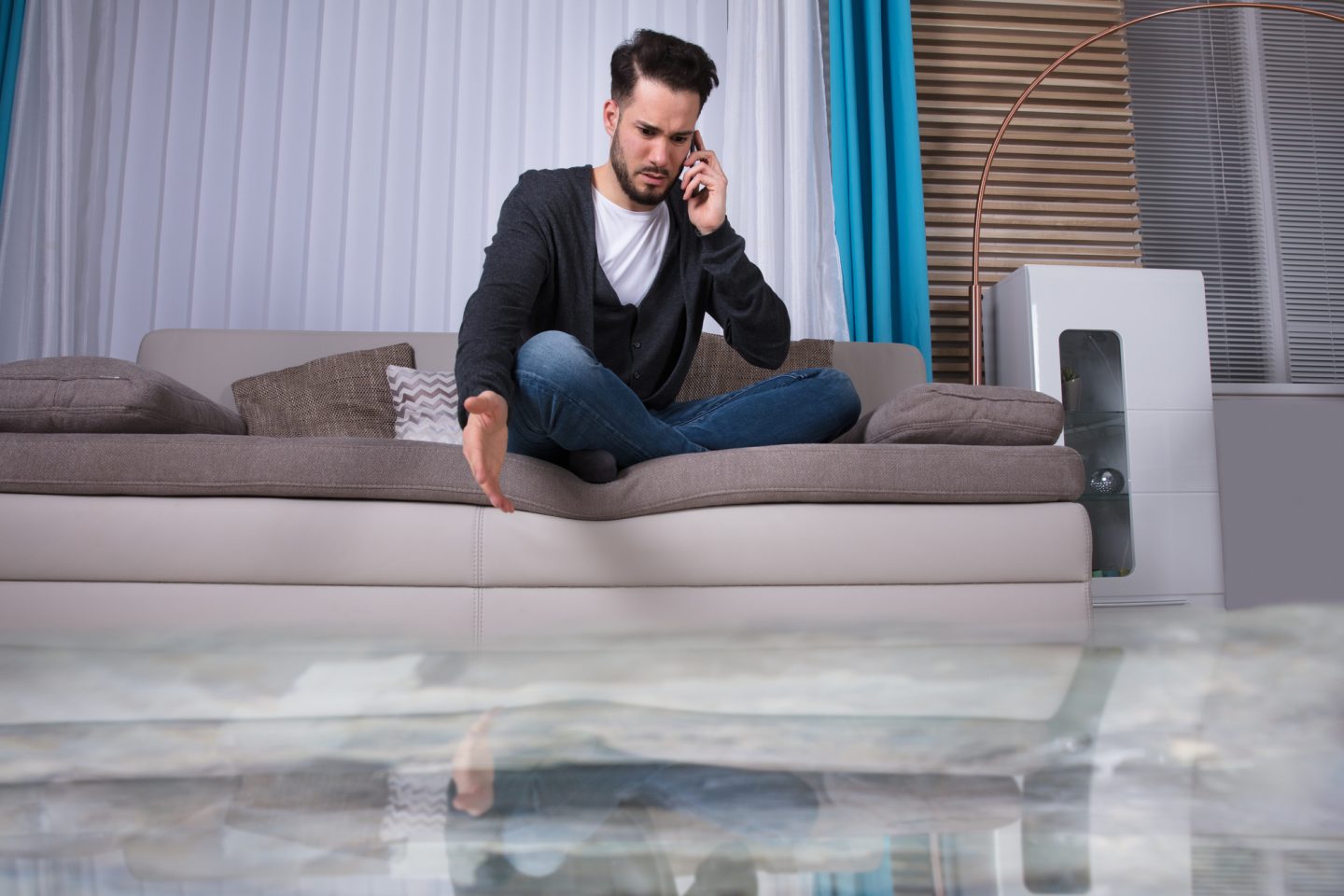
Discovering a flood in your home is a shocking and stressful experience. Whether the water is from a burst pipe, a failed appliance, or a storm, the first 24 hours after a water damage event are the most critical. The actions you take immediately can significantly impact the extent of the damage, the safety of your family, and the success of the restoration process. In the midst of this chaos, having a clear plan of action is essential to protecting your San Diego home.
Step 1: Prioritize Safety Above All Else
Before you rush to save your belongings, you must ensure the area is safe. Water creates numerous hidden hazards.
- Electrical Shock Risk: If there is significant standing water, especially if it is nearing electrical outlets or appliances, you must turn off the power to your home at the main circuit breaker before entering the area. Never touch any electrical devices while standing in water.
- Contamination Hazards: It’s crucial to identify the source of the water. If the flood is from a sewage backup or from outside, it is considered “black water” and is grossly contaminated with bacteria and pathogens that can cause serious illness. Avoid all contact with this type of water. As the Centers for Disease Control and Prevention (CDC) advises, exposure to contaminated floodwater is a serious health risk.
- Structural Dangers: Ceilings saturated with water are extremely heavy and can collapse without warning. Be aware of your surroundings and any sagging in the ceiling above you.
If you have any doubt about the safety of the situation, evacuate the home and wait for professionals to arrive.
Step 2: Stop the Source of the Water
If the flooding is from an internal plumbing issue, like a burst pipe or a broken supply line to an appliance, your most important immediate action is to stop the flow of water. Locate your home’s main water shutoff valve and turn it completely off. Every homeowner should know the location of this valve before an emergency. It’s often located in the garage, a utility closet, or on an exterior wall where the water line enters the property. Stopping the water source is the single most effective thing you can do to prevent further damage.
Step 3: Make Two Crucial Phone Calls
Once you are safe and the water source is stopped, you need to call for help.
- A 24/7 Water Damage Restoration Company: Do not delay this call. A professional restoration company can dispatch a crew immediately to begin the critical water extraction and drying process. The longer water and moisture sit, the more damage they cause to your home’s structure, and the greater the risk of dangerous mold growth, which can begin in as little as 24-48 hours.
- Your Homeowner’s Insurance Company: Report the damage to your insurance agent as soon as possible. This will officially start the claims process. Your policy requires you to take “reasonable steps” to mitigate further damage, and calling a professional restoration company is a key part of fulfilling that responsibility.
Step 4: Document the Damage
If it is safe to do so, begin documenting everything for your insurance claim. Take as many photos and videos as you can of the affected rooms and all damaged belongings. This evidence will be invaluable when working with your insurance adjuster. You can also begin some minor mitigation, such as moving small furniture, important documents, and other valuable items to a dry, unaffected area of the house. As safety resources like the American Red Cross advise, prioritize your personal safety above all else during this process.
Your San Diego Water Damage and Flooding Experts
A flood in your home is a traumatic event. Navigating the immediate aftermath correctly is critical for protecting your property and setting the stage for a successful recovery. For homeowners across San Diego, the team at Christian Brothers Pro is ready to respond 24/7 to handle your San Diego water damage and flooding emergency. Contact us immediately for professional service.
